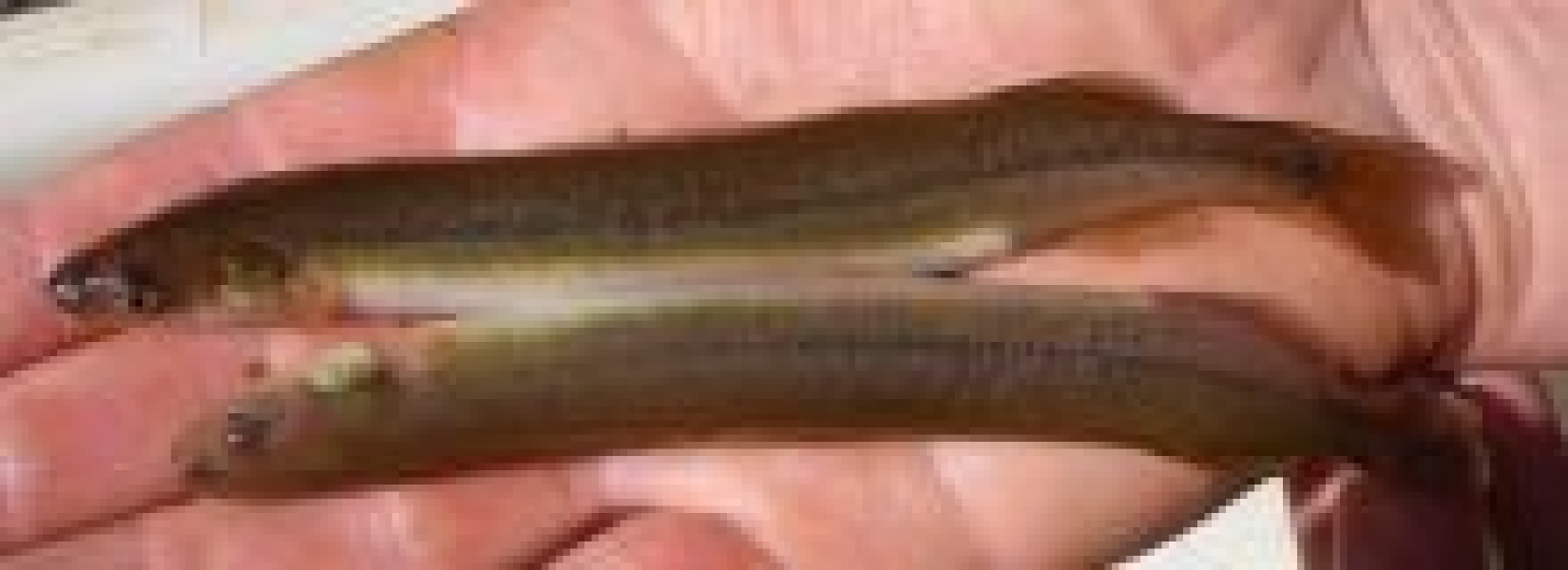Inanga are the predominant species in the modern whitebait fishery.
Common name: Inanga and whitebait Scientific name: Galaxias maculatus Māori names: includes īnanga
About this species
Whitebait fisheries in New Zealand rivers are based on the juvenile, upstream migrant phase of five species of galaxiid fish. The main species is inanga and its proportion in whitebaiters’ catches is typically 70 to 100% of the total catch.
Adult inanga are the smallest of all of the whitebait species, usually reaching 100-110 mm. Unlike the other members of the whitebait family, inanga cannot climb. Instead they overcome small barriers by burst swimming. These fish are considered to be a lowland species due to their lack of climbing ability.
The spawning grounds of inanga are well known and these fish spawn amongst riparian vegetation near the upper limit of the saltwater wedge at high tides. Of concern is the fact that the available spawning habitat for this species has decreased in many places. In particular, drainage of swamps and wetlands has reduced vast areas of adult habitat, whereas land use change on river banks has reduced spawning habitat. The value of these habitats is now being recognised, leading to protection and restoration initiatives.
Traditional knowledge
The annual whitebait migration was an important mahinga kai resource for Māori all around Aotearoa. Certain districts were famed for their special products, for example, in the Waikato inanga (whitebait) were especially valued.
Inanga were also taken during their downstream migration to the ocean when they were rich and full of eggs. Captured fish were either dried in the sun or on rocks. Preservation in this manner meant that the fish could be kept in an edible state for months.
Impacts on inanga
A number of factors have combined to impact inanga populations across Aotearoa, including wetland drainage, loss of spawning habitat, trout predation, pest fish increase (e.g., gambusia), flood protection works, and migration barriers such as weirs and culverts.
All life stages of the inanga prefer to live within a temperature range from 17°C to 20°C, with the adults preferring slightly cooler waters as compared to juveniles.
In laboratory experiments inanga were found to be less sensitive to suspended sediments than banded kōkopu, with 50% avoidance of Waahi silt at 420 NTU. Inanga appear to be able to withstand low dissolved oxygen levels and were observed to rise to the surface of the water to get air. This species seems to be relatively tolerant of ammonia levels compared to other native fish. The only native fish more tolerant to ammonia were tuna. Inanga appear to prefer slightly alkaline pH, with adults showing a stronger preference than juveniles. While many native fish appeared to avoid pH values above 9.5, inanga did not appear to show avoidance behavior.
References and further reading
Find papers relevant to all Aotearoa freshwater fish on our reference page

